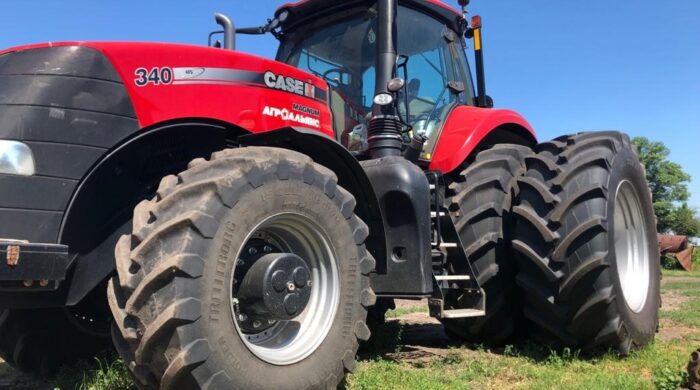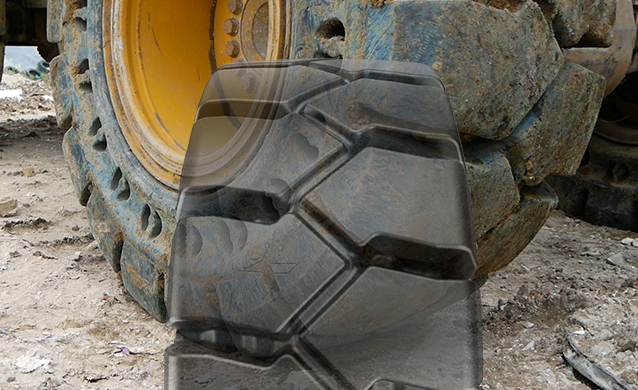MAXAM on When a Producer Should Replace Their Agricultural Tires
AG Technical Bulletin – Replacing Agricultural Tires
How does a producer know when AG Tires (R-1/R-1W) need to be replaced, what rules should be followed to ensure maximum performance & protect equipment, and why do overall tire diameters vary slightly by the manufacturer?
In the agricultural industry, it is how the equipment is utilized or the inherent operational requirements that will affect the tire replacement cycle. As agricultural tires are considered off-road and not US Department of Transportation (DOT) regulated, there are no firm rules to determine when an ag tire absolutely needs to be replaced.
Below are some general guidelines that can help a farmer or grower determine his next move or predict the removal of his tires. In all cases, MAXAM recommends utilizing ag tires for the longest possible time regardless of the type of tire R1 or R1W, if the tire can be safely utilized to meet operational requirements and therefore achieve the most value for the tires in question.
General Tire Replacement Guidelines for Farmers & Growers:
| Tire Operational Condition | Root Cause | Recommended Action |
|---|---|---|
| Increased Tire Slip | Adjusted tire inflation not working or tire tread depth (increased wear) reducing operational traction, great fuel consumption, or increased machine slip. | Tires may be too worn for the soil condition or crop conditions of the operations. If tires are exceeding a 15% slip rate, MAXAM suggests replacing the tires to improve traction and fuel efficiency. |
| Constant Air Leakage or Loss of Air | Loss of traction due to poor air valve maintenance or tire cuts resulting in constant air loss. | Tire damages or cuts from operational use are degrading via leakage of the required air pressure to operate the tire effectively. In this case, MAXAM suggests replacing the tires. |
| Constant Air Excessive Damages or Cuts in the Tread or Sidewall | Tire cuts, exposed casing cables, large damage, or deformities on the tread/sidewall are indicative of external or internal damages that could impact the safe operation of the tires. | Evaluate the tires for damages that could impair operations or result in equipment damage while in operation. This situation can result in imminent failure or loss of tire integrity, MAXAM suggests replacing the tires. |
| Uneven Tire Wear | Tires exhibiting uneven tire wear or more than a 10% difference in tread depth on the same axle can result in a loss of traction, increased slip, increased fuel consumption, or can impact gear ratios. | Tires have uneven wear that can precipitate a loss of traction or increased fuel consumption and /or can also impact the gear ratio of a front wheel assist tractor. MAXAM suggests replacing the tires on the axle in this circumstance. |
| Tire Diameter Differences | Tires that have more than a 5% difference in overall diameter that is operating side by side or on the same axle can lead to a loss of traction, increase slip, generate gear ratio issues, and increase soil compaction as the load will shift to the larger diameter tire. | Tire diameters need to be as closely matched as possible to prevent excessive slip and limit any gear ration mechanical issues. Anytime where larger tires are used side by side due to overall diameter differences the axle load will shift to the larger tire which can increase soil compaction and limit your gross tire flat plate or footprint. MAXAM suggests replacing tires on an axle at the same time to limit this occurrence. |
| Ozone Deformities or Dry Rot | Tires stored or equipment parked in the open achieving excess sunlight or ozone cracking/wear that will degrade tire casing integrity. | Inspect tires in open storage or parked equipment for ozone cracks that expose internal materials such as working belts or casing materials. If materials are exposed, MAXAM suggests replacing the tires as needed. |
All the above can be considered resulting conditions of extreme fieldwork and or poor maintenance/storage. In all cases MAXAM recommends the following operational parameters being employed regularly:
- Monitor normal tire slippage by tractor type:
- 2WD Tractors = from 10% up to 15% slip rate
- MFWD Tractors = from 8% up to 12% slip rate
- 4WD Tractors = from 8% up to 10% slip rate
- Verify tractor gear ratio for MFWD Tractors and ensure tires selected to have the appropriate tire diameter front to rear (RCI) to maintain the 5 to 1 engine gear ratio required for MFWD type tractors and minimize any extreme tire wear.
- Set the correct tire cold inflation pressure based on the actual axle load (tire weight) and the number of tires being employed by tire size.
- Regularly check tire inflation pressures for the specific implement or load being carried. If necessary, weigh the machinery to ensure proper cold air inflation settings for improved wear and performance.
- Employ the best weight distribution possible by adjusting axle load ballast using suitcase weights, wheel mounted weights, or tire liquid ballast (not recommended) for the pulled or towed implement to ensure improved tire wear
- 2WD tractors weight distribution: 25-30% front axle & 75%-70% rear axle
- MFWD tractors weight distribution: 40-45% front axle & 60%-55% rear axle
- 4WD tractors weight distribution: 55-60% front axle & 45%-40% rear axle
- Inspect ag tires regularly for damage, cuts, loss of air or any indication of uneven wear or ozone cracking replace tires as necessary especially as you move from season to season and when you start or stop equipment after long periods of use or storage.
Differences between ag tires made by various tire companies on the size dimensions or specifications are always linked to the fact that not all tire fabrication steps, quality, efficiency, or production controls are the same between manufacturers. As a result, manufacturers’ processes and tire geometry will vary for the same tire size within industry tolerances due to material or casing component differences that will lead to specific variances between tire brands. MAXAM, therefore, does not recommend mixing brands on machinery axles to ensure the best uniformity in terms of tire diameter, performance, traction, and value.
MAXAM’s objective for 2022, and in the years to come is to continue to deliver radial products in the right sizes, with the right load capabilities, that when operated at the right air pressure will deliver the value our customers expect from MAXAM. Backed by a world-class warranty program, our radial tires are manufactured to maximize performance, reduce compaction, and improve traction with superior stability resulting in increased productivity. Try the MAXAM advantage in your operations today!



